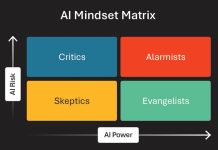Sports teams from the professional level to high school invest significant sums of money in their facilities to obtain peak productivity from their athletes. On the professional level, athletes are paid exorbitant salaries, thus it only makes sense for owners to seek the best return on their investment by supplying elite training equipment that can help draw out every bit of their skills.
In addition, a cutting-edge training facility also serves as an effective recruitment tool for college or professional athletes as they decide where to apply their skills. It should be no different in all other worlds of business, says John D. Macomber, a senior lecturer in finance at Harvard Business School and co-author of “Healthy Buildings: How Indoor Spaces Drive Performance and Productivity.”
“As a society, we are wasting money on bad buildings, and we are wasting lives in bad buildings,” Macomber and his co-author Joseph G. Allen write. “To be blunt, the air in our buildings makes us sick and saps our productivity.” The authors state their purpose in writing the book is to make the business case for healthy buildings.
Getting beyond green
Macomber and Allen say the green building movement of the early 1990s that led to LEED (Leadership in Energy and Environmental Design) certification provides valuable lessons for a similar push for certifying healthy buildings. LEED certification went from a nice-to-have to a baseline-must-have. “We expect that in the future the implementation, validation and communication of some concept of Healthy Buildings will become an even more important differentiation for sophisticated companies,” they state.
In the book, they explain that two brothers from the finance world founded the International Well Building Institute and created a WELL certification process in 2014.
In fact, the authors argue, while billions of dollars are spent on engineering features to construct and upgrade office buildings to attain LEED certification, the ROI is minimal compared to the very real returns that can be realized from a focus on creating healthy buildings. Improved ventilation, air quality, temperature control, lighting, noise and other characteristics of a work space have a significant impact on the performance of those who inhabit a building. The authors call these Health Performance Indicators (HPIs).
“At a fundamental level, health drives human performance. This means that building performance is a critical metric that every business should be tracking,” they state in an article on what makes a building healthy.
Reinforcing the importance of healthy buildings is the 3-30-300 rule of real estate that was created and popularized by the global facilities management company JLL. The rule reveals relative cost per square-foot across three factors — utilities, rent and people. For every $3 a company spends on utilities, it spends $30 on rent and $300 on payroll. “We’re really missing the boat here if we’re chasing a few nickels of energy efficiency by stretching out the fans and filters while we’re losing thousands of dollars around human productivity and illness,” Macomber told Sales & Marketing Management.
The problem of split incentives
One challenge to increasing the focus on healthy commercial buildings is that of split incentives. Macomber estimates the cost of having a building be WELL-certified at 1 or 2% of the total capital cost. Who will foot that bill?
Commercial landlords typically want to operate a building at the lowest possible cost. And most tenants are not yet sophisticated enough to realize that a healthier work environment goes straight to their bottom line in the form of higher cognitive function leading to better decision-making and fewer employee sick days.
Macomber’s hope is that increased awareness of the benefits of healthy buildings will help commercial building developers understand they can get a premium in rent in strong markets and provide a marketing advantage when they need to keep their space occupied in down real estate markets.
He also expects the COVID-19 pandemic will heighten employers’ sense of responsibility to their workers regarding the health of office space. As evidence that work environment is becoming more important to workers, Macomber and Allen point out that company reviews on the website Glassdoor increasingly include comments about office smells, noise, temperature, lighting and general cleanliness.
Science journalist Emily Anthes agrees that healthy buildings will become an effective recruiting tool for companies, just like swanky cafeterias serving free food and modern buildings set on open campuses were all the rage for high-tech companies that were growing and hiring in the last two decades.
Anthes is the author of “The Great Indoors: The Surprising Science of How Buildings Shape Our Behavior, Health and Happiness.” Like Macomber and Allen, she began work on her book long before the world was hit with a pandemic, but its release this spring could not have been better timed.
“Healthy building and healthy building certification will absolutely be a recruitment tool given what’s happening with the pandemic,” she says. “You will see companies talking about having the highest ventilation standards and receiving platinum certification from a healthy buildings group.”
A laboratory for studying work environments
In her book, Anthes writes at length about the Well Living Lab, a 7,500 square-foot office space built specifically to conduct research on how office conditions impact employee performance. The project is a joint effort between the Mayo Clinic and Delos, a New York-based real estate company. Located in Rochester, Minnesota, the Well Living Lab features a standard office layout that allows researchers to control virtually every aspect of the building’s environment, including ventilation, temperature, and natural and artificial light. Walls can be moved, the tint of the windows can be changed and acoustical effects can be controlled.
Studies conducted in the lab revealed that employee dissatisfaction with one aspect of their work environment — the temperature, for example — can color workers’ impressions of the space’s other attributes. Researchers found that daylight and window views boost employees’ working memory, but have no effect on their ability to switch effectively between tasks. Providing artificial light that is on the cooler, bluer end of the spectrum improved their scores on a task-switching test, but did not impact other elements of executive function.
Of course, a work environment that is right for one enterprise may be wrong for another. Similarly, no two employees are alike, thus conditions that foster peak performance for some workers, may cause others to lag. Knowing this, Anthes says, should encourage frontline managers to provide as much flexibility to workers as possible as they make decisions about where to tackle their tasks.
“My recommendation for middle managers would be to trust their employees to the extent they can to know what they need and where and how they work best. Allow them some flexibility. If they want to tackle tasks somewhere other than their desk, trust them enough to have some control over their work environment,” she says.
Managers of sales teams and other mid-level executives may feel they don’t have much control over the conditions of their office space. That is not necessarily the case. Using data like that shared in the books by Anthes, Allen and Macomber, as well as the treasure trove of research on healthy buildings that is available online, managers can lobby for steps to be made to improve work environments just as they do for new CRM or other performance improvement investments.
“Consider the talent you will want to attract in a post-Covid-19 world,” state Allen and Macomber. “Today, businesses need to understand that prospective hires will not just be interviewing you, they will be interviewing your buildings. And you can be sure that future employees will be paying close attention.”





